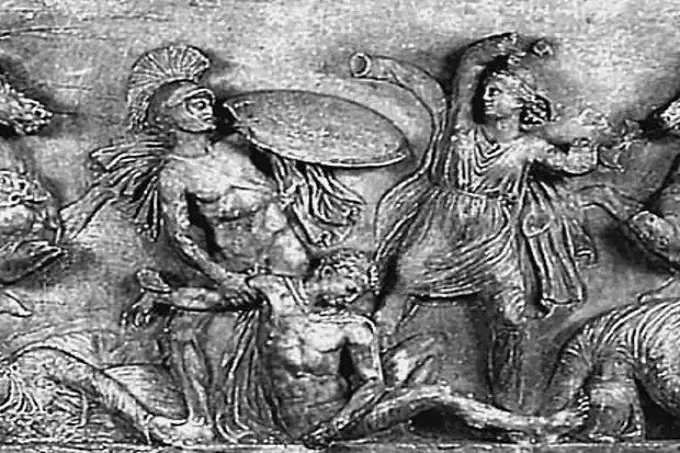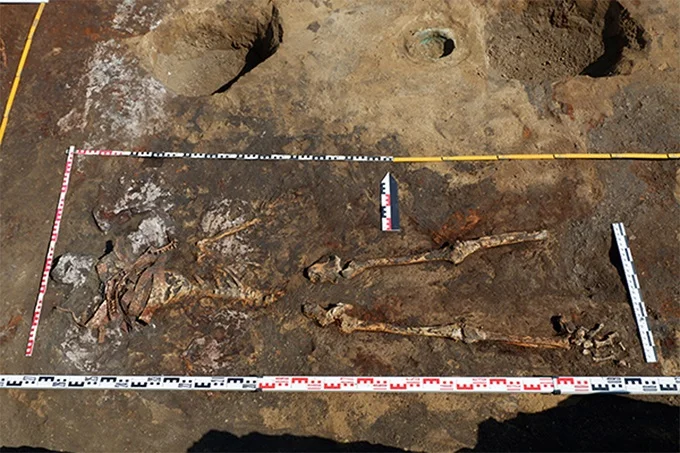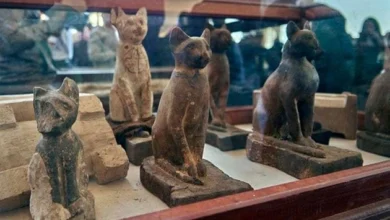Were the Amazons real or what does an Amazon woman look like?

Homer and Herodotus tell us of a clan of Amazons, female warriors who once dwelt on the Black Sea’s coasts ‘in the wilds of remote Scythia.’ In their realm, mankind had no place. They battled the Greeks bravely and ruthlessly against Troy’s fortifications. Is this a true story or a made-up legend? Or did the Greeks meet a tribe that followed matriarchal rules, and the encounter astonished them so profoundly that we still tell the old narrative, which has long since become a fiction, three thousand years later?
The Amazons’ narrative is pure fiction, but the account of the Trojan War – the parade of the Amazons’ army – appeared like a lovely fairy tale for a long time. It has only become obvious that Homer’s “Iliad” had a true context in the past hundred years. The myth of the Amazons is no different.
On the pages of the Iliad, “courageous hordes of Amazons” are mentioned three times. However, Homer does not give any special explanations. The later authors are much more talkative: Herodotus (c. 490-425 BC), Hippocrates (c. 460-370 BC), Diodorus Siculus (c. 90-21 BC), and Strabo (64 BC – 20). They reflect on the origin of this tribe, describe the way of life of the Amazons, referring to long-standing testimonies and legends. In part, the storytellers contradict each other, but on one thing, they agree with each other: the world of the Amazons was completely different from the Greek!
Once throughout the Mediterranean, as in other regions of the planet, the power in the tribe belonged to women, but gradually with the changes in society – with the development of plow farming and cattle breeding – men began to play an increasing role. Many women were left with the household – they were engaged in it on an equal basis with slaves (patriarchal slavery originated in primitive peoples). Therefore they themselves were reduced to almost a slave position. Patriarchy reigned in society. Women, however, were excluded from all social life. Their enslavement ends “right before our eyes” – in the foreseeable historical period.
So, in Athens around 600 BC., women lost the right to interfere in the political life of the polis. They were even denied the right to attend theatrical performances and sports performances. The more confused the Athenians were rumors that there was a kingdom of women somewhere in Asia.
“Emancipated” Amazons knew how to stand up for themselves with weapons in their hands. Their main enemies were men – they were tolerated only for the sake of procreation, and none of them could claim power in the Amazon tribe. It was like a mirror separating two worlds: Hellas, which men-owned, and a country lost among Asia, where “everything left seemed to be right” and women-owned everything.
Interestingly, ancient authors invariably emphasize their unparalleled courage and military prowess when speaking of the Amazons. In the Roman Empire, the highest praise for a warrior was to tell him that he “fought like an Amazon.”
According to the Roman historian Dion Cassius, when the half-mad emperor Commodus (180-192) acted in the arena of the Colosseum as a gladiator, fighting either with animals or with people, senators, and with them, all the other spectators were obliged to greet him with shouts: “You – Lord of the world! In your glory, you are like the Amazons!”
The warrior maidens were worthy of this admiration. Their composure has become a legend: pursued by enemies, they hit them without a miss with a bow, half-wrapped in the saddle. They were especially adept at handling a double ax. This razor-sharp weapon, as well as a light crescent-shaped shield, have become invariable attributes of the Amazons in any depiction.
Even more surprising was the way of life of warlike ladies. In the tribe of the Black Sea Amazons, there was supposedly no place for men. The Libyan Amazons kept men in slavery: they cleaned up the house, looked after the children, and were used to carry weights along with the beasts of burden.
Since the Amazon tribe ordered men to be found, where did the children come from? The ancient authors have already puzzled over this ancient secret of the “Immaculate Conception”; in addition, many queens and princesses of the Amazons allegedly swore that they would rather die than lose their virginity.
Of course, if people followed only such moral standards, the world would be different, and the Amazon race would be cut short in the bud. Its longevity is an acknowledgment of its intemperance. Most of the Amazons were not “exemplars of strict virtue.” They sinned by continuing to weave the tribal pattern with their bodies.
Once a year, in the spring, when everything is blooming and longing to be fruitful, the common darkness, like a net, entangled the Amazons, dragging them into sin. They went on a hunt for men. Having caught themselves handsome, full of healthy males – most often, they were men of neighboring tribes, they feasted for two months and indulged in love.
Children were born nine months after the spring orgy. If boys were born, they were, at best, sent to their fathers, and at worst, mutilated or killed. Daughters, however, were welcome children, they were fed with mare’s milk. All of them had to undergo a cruel procedure: they had their right breasts taken away (according to some authors, their left breasts). As we said, this was done so that, having matured, it was easier for the Amazon to draw the bow, and it was more convenient to cover herself with a shield. This is how the “emancipation” of the Amazons proceeded.
Jakob Bachofen (1815-1887), a Swiss historian, was the first to propose a highly discussed notion at the time but now seems to be increasingly reasonable: in ancient times, humanity lived for a long time under matriarchal rules. The tribe’s leadership was made up entirely of women. They were in charge of the tribe’s fields and supplies, as well as the homes.
The Amazons’ customs would have come as no surprise to anybody in ancient times. The Amazons, on the other hand, symbolized the distant past in a society governed by violent men for a long period, the olden days, the stories of the past. Was it feasible for two worlds – ancient and modern – to collide?
Even in the twentieth century, individuals living in the Stone Age may be found in the wilds of distant tropical jungles. Why couldn’t the Achaean Greeks of Mycenae and the Trojan War encounter a tribe that followed matriarchal rules during one of their war campaigns? We believe that an experience like this would have astounded them as much as the invasion of the one-eyed Cyclopes.
The war with them, like in the Russian saying, “An unwanted visitor is worse than a Tatar,” created during the Baskak invasions in the XIII-XIV centuries, might remain etched in people’s minds for generations. However, unless archeologists intervene, history will remain an arena for speculative games. Only their results will be able to separate the falsehoods from the truths and clear the veil of possibilities. What can we learn from archaeologists today?
In 1928, Soviet scientists made a stunning find while excavating in the village of Samegrelo-Zemo Svaneti on the Black Sea coast, that is, in the Amazon settlement region. They discovered an ancient cemetery with a “prince” dressed in full armor and equipped with a double ax. However, a closer examination of the bones revealed that it was… the remains of a lady. Who was she, exactly? Is she the Amazon Queen?
In 1971, another woman’s body was discovered, this time in Ukraine, buried with royal honors. Next to her was a girl’s skeleton, which was also lavishly ornamented. Weapons and gold valuables, as well as two individuals who died, were buried beside them, according to experts, “deaths that were not expected”. Isn’t this the queen of the Amazons, surrounded by slaves who had been murdered in her honor?
During excavations at the site Pokrovka in Kazakhstan in 1993-1997, the graves of many people were discovered “women who are warriors Arrowheads and daggers were found next to the women’s bones”. The ladies of this nomadic clan apparently understood how to defend themselves in a battle. It was a two-and-a-half-thousand-year-old grave. Who were they, exactly? Are there Amazons as well? Perhaps the claim that the surviving Amazons retreated to the Caucasus highlands after the Trojan War was true? They may travel to the Kazakh steppes in a few millennia from there.

Until now, no one has been able to relate all of these discoveries, unearthed in the Black Sea area and near the Caspian Sea, to the mythology of a tribe of warlike women who lived under matriarchal rules. Furthermore, no thorough excavations have yet been carried out in Turkey, near the mouth of the river Thermodont, where tradition has claimed that the Amazons’ empire once stood. Could it be that they weren’t a myth after all and that they didn’t vanish into thin air? Scientists may discover cultural relics left by a strange and remarkable but backward for the Hellenic age tribe – the Amazons – in the near future.
Amazons of Libya
The Amazons of Libya originated on the island of the Dawn Evening (possibly referring to the island of Gran Canaria). They had blond hair and blue eyes. Their dominion was said to have included North Africa and Asia Minor. Homer cites the grave of their queen, Myrina, in the Iliad.
According to Diodorus of Sicily, the Libyan Amazons lived a thousand years before the Black Sea Amazons. In the fifth century B.C., Herodotus traveled to North Africa. He said that he came to a community still following Amazonian rituals near Lake Tritonis (Tunisia): during the yearly festival, local females “split into two groups” battle each other with stones and sticks.
Amazons in the United States
There was a resurgence of interest in the Amazons in the late Middle Ages, particularly during the Renaissance. Travelers at the period encountered locations where women had significantly more freedom than their European counterparts.
Marco Polo, for example, claimed to have encountered Amazons in Asia. “Spaniards and Portuguese recorded Amazon states” in South America. By the way, the continent’s biggest river was named for the warlike ladies. The Spanish conqueror Francisco de Orellana battled fiercely courageous Indian women on its coasts. When he returned to Spain, he mentioned the presence of a vast river on the banks of which he lived “Women’s warrior republic
The term “Amazon” resurfaced around the end of the eighteenth century. Women were becoming interested in horseback riding at the time. The term “Amazons” was used to describe them.
The seventeenth-century Caucasian Amazons
The Italian Archbishop Arcangelo Lamberti journeyed to the Caucasus in the seventeenth century, when he purportedly saw Amazons. According to him, the Tatars and Kalmyks were always at battle with three tribes of warrior-maidens.




